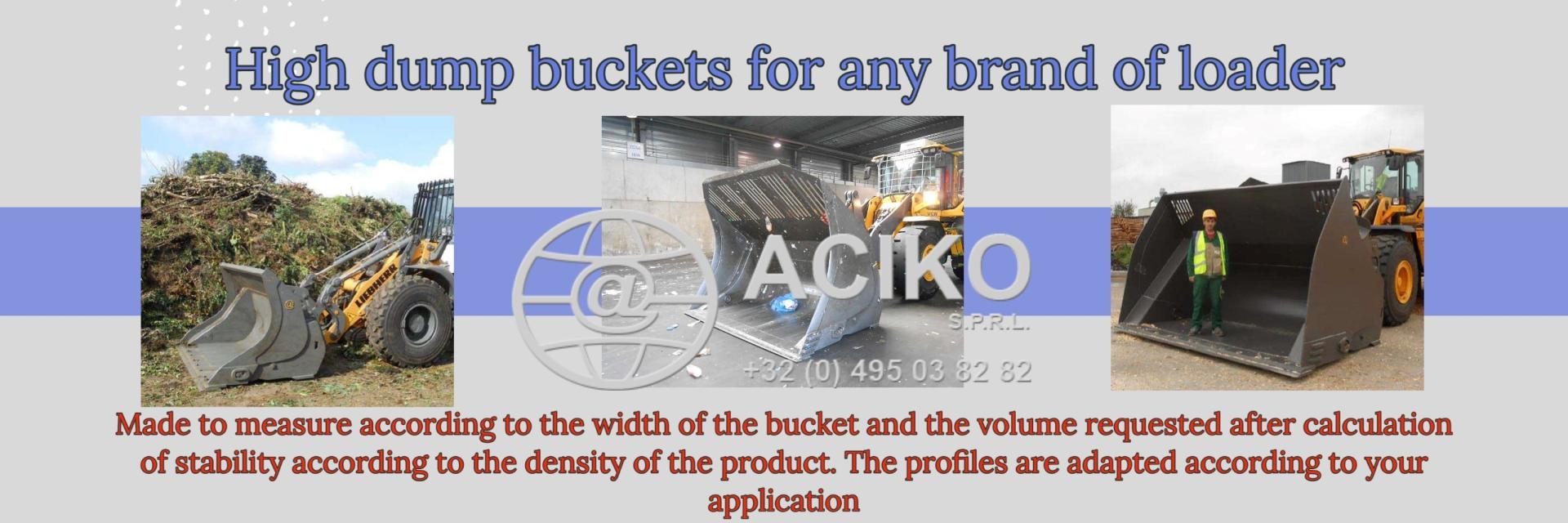Smarter Concrete with Hybrid Random Forest Strength Predictions
 03/10/25-FR-English-NL-footer
03/10/25-FR-English-NL-footer
Du béton plus intelligent grâce aux prédictions hybrides Random Forest
 Image- R.E.News©
Image- R.E.News©
Le béton est partout. Des routes aux gratte-ciel, il est la colonne vertébrale de nos villes modernes. Mais derrière sa solidité se cache une ombre : la production de ciment, ingrédient clé du béton, est responsable d’environ 8 % des émissions mondiales de CO₂. Une statistique qui pousse chercheurs et industriels à réinventer ce matériau incontournable.
Parmi les alternatives émergentes, le béton autoplaçant à forte teneur en cendres volantes (HVFA-SCC) suscite un intérêt croissant. Ce matériau novateur remplace une partie du ciment par des sous-produits industriels, réduisant ainsi l’empreinte carbone tout en améliorant la durabilité et la mise en œuvre. Mais une question demeure : comment prédire avec précision sa résistance, alors que sa composition complexe défie les méthodes traditionnelles de modélisation ?
Quand l’intelligence artificielle entre en jeu
C’est à cette énigme qu’ont décidé de s’attaquer des chercheurs de l’Institut de Technologie de Muzaffarpur et du Dayananda Sagar College of Engineering en Inde, en collaboration avec l’Université de Thammasat en Thaïlande. Leur étude, intitulée Smart Prediction: Hybrid Random Forest for High-Volume Fly Ash Self-Compacting Concrete Strength, propose une approche nouvelle : utiliser des modèles hybrides d’apprentissage automatique pour rendre les prédictions plus fiables… et plus compréhensibles.
Le défi est de taille. L’ajout de cendres volantes et de fumées de silice modifie profondément les propriétés du béton, tant à l’état frais qu’à l’état durci. Les paramètres à surveiller sont nombreux : taux de remplacement, âge de cure, rapports d’écoulement (J-ring, L-box, V-funnel)… Une véritable équation à plusieurs inconnues.
Les modèles statistiques classiques peinent à suivre. Les modèles Random Forest, eux, offrent déjà de belles promesses. Mais leur réputation de “boîte noire” – prédire sans expliquer – a jusqu’ici limité leur adoption par les ingénieurs de terrain.
Un Random Forest nouvelle génération
Pour franchir cette barrière, les chercheurs ont développé une version hybride des Random Forest. Ils les ont combinés à différentes techniques d’optimisation – essaim particulaire, optimisation bayésienne, évolution différentielle (RF-DE) – afin d’affiner les résultats.
Le verdict est sans appel : le modèle RF-DE surpasse les autres, offrant les prédictions les plus précises de la résistance à la compression. Pour valider ces résultats, l’équipe a mobilisé des outils avancés tels que SHAP (SHapley Additive exPlanations), les courbes d’erreur de régression et l’analyse d’incertitude. Un gage de transparence essentiel pour convaincre les professionnels du BTP.
De la recherche au chantier : un outil concret
Mais la véritable avancée ne réside pas uniquement dans l’amélioration des modèles. Les chercheurs ont développé une interface graphique open source basée sur RF-DE. Cet outil intuitif permet aux ingénieurs de saisir leurs paramètres de mélange et d’obtenir immédiatement une estimation fiable de la résistance du béton, sans compétences particulières en codage ou en statistique.
Comme le souligne le co-auteur Suraparb Keawsawasvong :
« Notre objectif n’était pas seulement de gagner en précision, mais aussi de créer un outil pratique que les ingénieurs puissent comprendre et utiliser. En combinant modèles hybrides et explicabilité, nous posons les bases d’un cadre standardisé pour le développement de bétons durables. »
Optimiser les dosages pour un béton plus fort et plus vert
Au-delà des prédictions, l’étude a également exploré l’impact des proportions de cendres volantes (FA) et de fumées de silice (SF). Résultat : une combinaison bien dosée améliore la cohésion du béton, réduisant le risque de ségrégation. Le taux optimal de SF, situé entre 6 et 8 %, offre les meilleures résistances après 90 jours.
Les analyses microstructurales, via microscopie électronique à balayage (SEM) et diffraction des rayons X (XRD), confirment ces observations : les bétons enrichis en SF présentent une matrice plus dense et moins de vides, gage d’une meilleure performance mécanique.
NJC.© Info Smart Prediction: Hybrid Random Forest for High-Volume Fly Ash Self-Compacting Concrete Strength
---------------------------------------------------------------------------------------------------------------
 03/10/25-English
03/10/25-English
Smarter Concrete Thanks to Hybrid Random Forest Predictions
 Image- R.E.News©
Image- R.E.News©
Concrete is everywhere. From roads to skyscrapers, it is the backbone of our modern cities. But behind its strength lies a shadow: the production of cement, a key ingredient in concrete, is responsible for approximately 8% of global CO₂ emissions. This statistic is driving researchers and manufacturers to reinvent this essential material.
Among emerging alternatives, high fly ash self-consolidating concrete (HVFA-SCC) is attracting growing interest. This innovative material replaces part of the cement with industrial by-products, thus reducing the carbon footprint while improving durability and processing. But one question remains: how can its strength be accurately predicted, given its complex composition, which defies traditional modeling methods?
When Artificial Intelligence Enters the Game
Researchers from the Muzaffarpur Institute of Technology and the Dayananda Sagar College of Engineering in India, in collaboration with Thammasat University in Thailand, decided to tackle this conundrum. Their study, entitled Smart Prediction: Hybrid Random Forest for High-Volume Fly Ash Self-Compacting Concrete Strength, proposes a novel approach: using hybrid machine learning models to make predictions more reliable... and more understandable.
The challenge is considerable. The addition of fly ash and silica fume profoundly modifies the properties of concrete, both in its fresh and hardened state. Numerous parameters must be monitored: replacement rate, curing age, flow ratios (J-ring, L-box, V-funnel), etc. A true equation with many unknowns.
Traditional statistical models struggle to keep up. Random Forest models, however, already offer great promise. But their reputation as a "black box"—predicting without explaining—has so far limited their adoption by field engineers.
A Next-Generation Random Forest
To overcome this barrier, the researchers developed a hybrid version of Random Forests. They combined them with various optimization techniques—particle swarm, Bayesian optimization, and differential evolution (RF-DE)—to refine the results.
The verdict is clear: the RF-DE model outperforms the others, offering the most accurate predictions of compressive strength. To validate these results, the team used advanced tools such as SHAP (SHapley Additive exPlanations), regression error curves, and uncertainty analysis. This guarantee of transparency is essential to convince construction professionals.
From Research to Construction Site: A Practical Tool
But the real breakthrough doesn't lie solely in improving the models. The researchers developed an open-source graphical interface based on RF-DE. This intuitive tool allows engineers to enter their mix parameters and immediately obtain a reliable estimate of concrete strength, without any special coding or statistical skills.
As co-author Suraparb Keawsawasvong points out:
"Our goal was not only to improve accuracy, but also to create a practical tool that engineers can understand and use. By combining hybrid models and explainability, we are laying the foundation for a standardized framework for the development of sustainable concrete."
Optimizing Mixtures for Stronger, Greener Concrete
Beyond predictions, the study also explored the impact of fly ash (FA) and silica fume (SF) proportions. The result: a well-proportioned combination improves concrete cohesion, reducing the risk of segregation. The optimal SF ratio, between 6 and 8%, provides the best strength after 90 days.
Microstructural analyses using scanning electron microscopy (SEM) and X-ray diffraction (XRD) confirm these observations: SF-enriched concretes have a denser matrix and fewer voids, a sign of better mechanical performance.
NJC.© Info Smart Prediction: Hybrid Random Forest for High-Volume Fly Ash Self-Compacting Concrete Strength
----------------------------------------------------------------------------------------------------------------
 03/10/25-NL
03/10/25-NL
Slimmer beton dankzij hybride random forest-voorspellingen
 Image- R.E.News©
Image- R.E.News©
Beton is overal. Van wegen tot wolkenkrabbers, het vormt de ruggengraat van onze moderne steden. Maar achter de sterkte ervan schuilt een schaduw: de productie van cement, een belangrijk ingrediënt van beton, is verantwoordelijk voor ongeveer 8% van de wereldwijde CO₂-uitstoot. Deze statistiek zet onderzoekers en fabrikanten aan tot het heruitvinden van dit essentiële materiaal.
Onder de opkomende alternatieven trekt zelfverdichtend beton met een hoog vliegasgehalte (HVFA-SCC) steeds meer belangstelling. Dit innovatieve materiaal vervangt een deel van het cement door industriële bijproducten, waardoor de CO₂-voetafdruk wordt verkleind en tegelijkertijd de duurzaamheid en verwerking worden verbeterd. Maar één vraag blijft: hoe kan de sterkte ervan nauwkeurig worden voorspeld, gezien de complexe samenstelling, die traditionele modelleringsmethoden tart?
Wanneer kunstmatige intelligentie zijn intrede doet
Onderzoekers van het Muzaffarpur Institute of Technology en het Dayananda Sagar College of Engineering in India, in samenwerking met de Thammasat University in Thailand, besloten dit raadsel aan te pakken. Hun onderzoek, getiteld Smart Prediction: Hybrid Random Forest for High-Volume Fly Ash Self-Compacting Concrete Strength, stelt een nieuwe aanpak voor: het gebruik van hybride machine learning-modellen om voorspellingen betrouwbaarder te maken... en begrijpelijker.
De uitdaging is aanzienlijk. De toevoeging van vliegas en silica fume verandert de eigenschappen van beton ingrijpend, zowel in verse als uitgeharde toestand. Talrijke parameters moeten worden gemonitord: vervangingspercentage, uithardingsleeftijd, stroomverhoudingen (J-ring, L-box, V-trechter), enz. Een ware vergelijking met veel onbekenden.
Traditionele statistische modellen hebben moeite om bij te benen. Random Forest-modellen bieden echter al veel belofte. Maar hun reputatie als een "black box" – voorspellen zonder te verklaren – heeft hun acceptatie door veldtechnici tot nu toe beperkt.
Een Random Forest van de Volgende Generatie
Om deze barrière te overwinnen, ontwikkelden de onderzoekers een hybride versie van Random Forests. Ze combineerden deze met verschillende optimalisatietechnieken – deeltjeszwerm, Bayesiaanse optimalisatie en differentiële evolutie (RF-DE) – om de resultaten te verfijnen.
Het oordeel is duidelijk: het RF-DE-model presteert beter dan de andere en biedt de meest nauwkeurige voorspellingen van de druksterkte. Om deze resultaten te valideren, gebruikte het team geavanceerde tools zoals SHAP (SHapley Additive exPlanations), regressie-foutcurven en onzekerheidsanalyse. Deze garantie voor transparantie is essentieel om bouwprofessionals te overtuigen.
Van onderzoek naar bouwplaats: een praktische tool
Maar de echte doorbraak ligt niet alleen in het verbeteren van de modellen. De onderzoekers ontwikkelden een open-source grafische interface op basis van RF-DE. Deze intuïtieve tool stelt ingenieurs in staat hun mengselparameters in te voeren en direct een betrouwbare schatting van de betonsterkte te verkrijgen, zonder speciale codeer- of statistische vaardigheden.
Zoals coauteur Suraparb Keawsawasvong opmerkt:
"Ons doel was niet alleen om de nauwkeurigheid te verbeteren, maar ook om een praktische tool te creëren die ingenieurs kunnen begrijpen en gebruiken. Door hybride modellen en uitlegbaarheid te combineren, leggen we de basis voor een gestandaardiseerd raamwerk voor de ontwikkeling van duurzaam beton."
Optimalisatie van mengsels voor sterker, groener beton
Naast de voorspellingen onderzocht de studie ook de impact van de verhoudingen vliegas (FA) en silica fume (SF). Het resultaat: een goed geproportioneerde combinatie verbetert de cohesie van het beton, waardoor het risico op ontmenging afneemt. De optimale SF-verhouding, tussen 6 en 8%, biedt de beste sterkte na 90 dagen.
Microstructurele analyses met behulp van scanning elektronenmicroscopie (SEM) en röntgendiffractie (XRD) bevestigen deze observaties: met SF verrijkt beton heeft een dichtere matrix en minder holtes, een teken van betere mechanische prestaties.
NJC.© Info Smart Prediction: Hybrid Random Forest for High-Volume Fly Ash Self-Compacting Concrete Strength
------------------------------------------------------------------------------------------------------------------
Date de dernière mise à jour : 02/10/2025
















